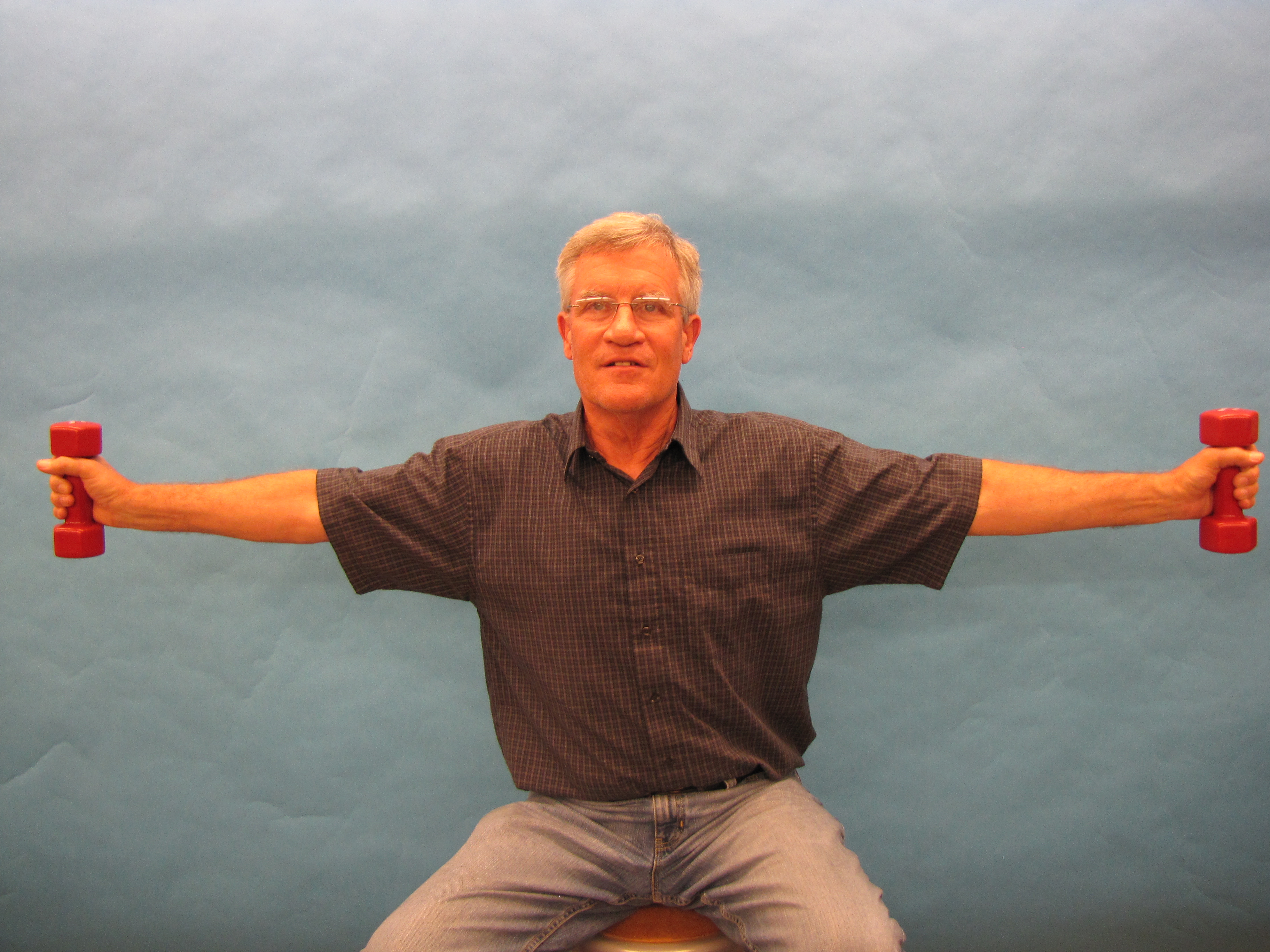Demos: 1Q-23 Conservation of Angular Momentum (Stool & Barbells)

This demonstration has two parts: (a) a person sits on the stool, which can rotate freely, with arms fully extended to the side. A dumbbell is placed in each hand and the stool is set into rotation. After a couple of rotations, the arms are brought quickly into the body and the rotation speeds up dramatically. Extending the arms once more slows the rotation down to the original amount. (b) Either sitting on the stool, or better, standing on the rotating turntable, the demonstrator tries to swing a baseball bat. As the upper body moves counterclockwise with the bat (assuming a right-handed swing), the lower body turns the other way, conserving angular momentum.
Directions: Choose a person that is not prone to motion sickness when spinning! Make sure the feet are not resting on the lower stool support and ask the person to extend his/her arms fully outward. Place a weight in each hand and start the rotation. (If you are doing this yourself, you can use your feet against the floor to start the rotation.) Ask the person to quickly pull in the arms then push them back out.
If performing the baseball bat demo on the turntable, be careful getting on to the table. It is very low friction and there is the possibility of falling while getting on.
Suggestions for Presentation: You might want to do the demo and then ask the class what is happening. Focus on the fact that although forces are involved in pulling in the weights, there is no net torque about the axis of rotation, so angular momentum is conserved. If you wish to pursue the energy aspects of this, rotational kinetic energy is not conserved because work is done in pulling in the weights to the center.
Applications: In part (a), the obvious application is to spinning ice skaters and rotating divers. In part (b), point out that the reason one can swing a bat normally on the ground without the lower body reacting is that the feet are anchored to the ground, effectively making the lower body mass near infinite. Also, as an application of Newton’s Law 3, if a diver coming off the board does a maneuver that involves touching the toes, as the upper body goes down toward the toes, the lower body HAS to come up to meet the hands.
Last Updated: Nov 30, 2023 11:25 AM